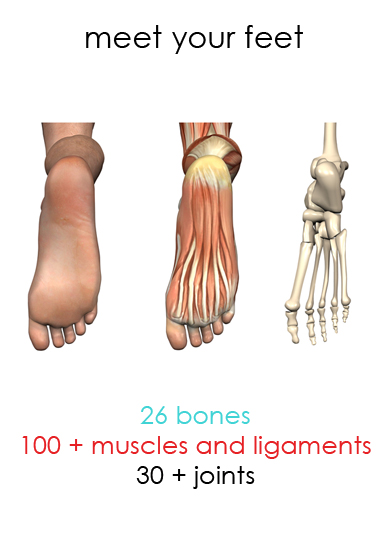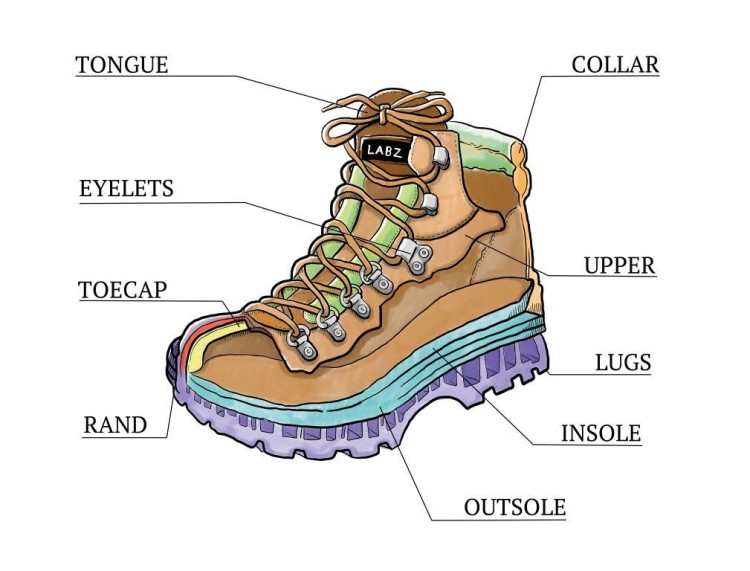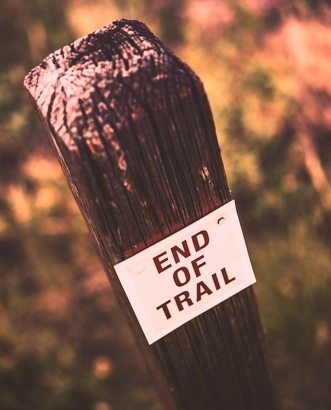In a couple of months I’m going to be setting out on a hike that I’ve been dreaming about for years. The Spicers Scenic Rim Trail is one of Australia’s great walks and will take us along the Great Dividing Range and through World Heritage Listed Gondwana Rainforest and a whole lot more. I’m beyond excited and also realising I need to up my game when it comes to my footwear.
While I do a lot of walking I was a little shocked to see that it’s been six years since I last set off on a multi day trek on the Twelve Apostles Lodge Walk. I still have my hiking shoes from that trip and occasionally wear them. And I could probably still go up a lot of hills and down dales in them. But I think the time has come to get a new pair and take the old ones as a back up.
When it came time to go shopping for a new pair of hiking shoes I came straight to one of my old blog posts for advice. This guest post was written by James Menta who was working with a hiking boots company that is no longer around at the time.
While the company may not be with us anymore, his post is still full of great tips for anyone who is trying to find the right shoes to go the distance in comfort. So with thanks to James, I’m bringing the post back. And now it’s over to …
… A guest post by James Menta …
Let me tell you about my absolute worst hiking experience with Lance, my mentor at the time.
In the process, I might mention a few places that you never heard of but don’t worry about that, all you need to know about these places is that they’re usually very cold.
Anyway, back to our story and the morals of it…
It was Alaska Day, and instead of going all the way to the Gulf for the official parade in Sitka, we’ve decided to soak up some October sun on the trail. The plan was to hike from Angel Rocks to Chena River, take a dip in the hot springs while we’re there and hitchhike our way back to the car.
Sounds good, right?
It sooo wasn’t. The experience made me wish we took that 600-something-miles trip to Sitka.

What was my mistake?
Aside from the fact that we couldn’t find any room in the trail shelter, or refill our water supply on the dried out spring not far after, my worst mistake was picking the wrong hiking boots for the trail.
It was around 8 hours and almost 9 miles of pure misery with a very blistery aftermath.
Read: The best glamping holidays in America
I’ve put countless miles behind me since that day at Angel Rocks and made many more mistakes over the decades of hiking.
The purpose of this article is to make sure YOU don’t repeat my mistakes when you choose the hiking footwear that’s best for you.
The inner workings of our feet
The human foot is a very intricate and delicate mechanism optimized for shock absorption and propulsion of our bodies.
It consists of:
- 33 different joints
- A network of 100+ ligaments, muscles, and tendons
- 26 bones

Let me tell you what I’ve learned over the years.
Hiking boots or hiking shoes
In my experience, this is the most puzzling question for young hikers. Let me give you a definitive chart of factors that’ll make this conundrum as easy as pie.

Hiking boots are your best option if:
- You’re going against a particularly rocky trail
- Objects on the trail make in uneven and jagged
- You listened to the weatherman and you’re expecting snow
- Some parts of the trail are steep
- You have sensitive ankles or knees
- You’re heading out with a heavy backpack
- You’re just starting out with hiking and your legs need additional stability and support
Hiking shoes are OK if:
- You’re taking a short day hike on a well-kept trail
- You’re mostly hanging around campsites
- The muscles in your legs are well-developed (you’re an experienced hiker)
- You’re not carrying heavy loads
Last but not least, just the fact that a model has the word hiking in the name, doesn’t mean it’s the best option. A good example of that are tactical boots, the better models offer the protection of a trekking boot and the lightness of a trail runner.

It’s just something worth exploring…
Tight-fit hiking footwear = asking for trouble
I know people are often advocating tight fit as the way to go, but I’m still standing behind my subtitle. Your feet will inevitably get swollen on the trail, and if there’s no extra room in your hiking boots/shoes you’re trouble.
Read: Eco friendly travel gifts
Every foot is different and no two trails are the same, but here are some general guidelines that should help you hit closer to home:
Tips for choosing the right fit:
- Use the same type of socks for testing the hiking boots/shoes you plan on wearing on the trail. It might not be a big deal but thickness of the socks can make all the difference.
- Once you put them on without lacing them, make sure you can slip your index finger between your heel and the back part of the shoe
- Do the lacing afterwards and check out if you feel your heel moving backwards
- Your toes shouldn’t touch the front end when you walk around, even at sudden movements
- Check if your heel and the shoes’ back end are moving together. You don’t want there to be any slipping going on inside. That’s just a blister waiting to happen.
If you’re buying online you may need to know your shoe size in a different country. If you don’t already know your international shoe sizes, here’s a handy shoe size conversion chart you can use.
The features
Let’s dig a little deeper and see what makes a good hiking boots and shoes tick.

The uppers
The material used for the upper of your hiking footwear will determine its breathability, weight, durability, abrasion and water-resistance.
Let’s see what’s “on the menu”:
- Full-grain leather – Or just “leather” is pretty resistant to water and abrasions, offering optimal durability as well. It lacks in breathability and break-in time, but it’s the best way to go for longer hikes, rough terrain and heavy loads
- Split-grain leather – Is a mix with nylon mesh for better breathability and light weight. It’s cheaper but less resistant to water and abrasions
- Nubuck leather – Is a “buffed” full-grain to closely resemble suede. It features almost the same PROs and CONs as full-grain but offers more flexibility
- Synthetics – We’re talking synthetic leather, nylon, polyester… They’re lighter than leather, break in quicker and dry faster. They’re also cheaper, but they’ll show signs of wear much sooner
Midsoles
They’re there to buff the cushioning, offer shock-resistance and are a key factor in your footwear’s overall stiffness.
We have two key players here:
- EVA – Stands for “ethylene vinyl acetate”, feels cushier, lighter, and it’s the cheaper choice of the two. More commonly used option also
- Polyurethane – It’s firmer and sturdier, thus more durable
Outsoles
Hiking boots and shoes all feature rubber outsoles. Carbon and some other materials can be added for extra stiffness, but that’s backpacking/mountaineering territory.
Additional considerations:
- Lug pattern – Lug is jus a fancy term for built-in “crampons” for better grip. In hiking shoes and boots we want them smaller and spaced widely for better mud and debris removal. Vibram soles (patented diamond-shaped lugs) are an excellent choice
- Heel break – “Lugless” part of the outsole designed for slowing you down on steep descents
Rands
They can be sporadically found on hiking footwear, and are just rubber wraps encircling the toe part or the entire shoe/boot. They’re there for additional rock and abrasion-protection.
Is water-resistance just clever marketing?
This is a burning question in hiking community, and I would have to say NO.
Do I consider lighter options to be a superior choice in most cases? YES.
But that doesn’t mean water-resistance doesn’t have its purpose. I’ll always opt for a more breathable model that dries quicker, but Gore-Tex is almost a bulletproof plan for keeping your feet dry in, let’s say, snow-covered trails.
Thinking outside of the box
It might come off as a surprise, and it might be a wrong place for this segment, but you might want to give hiking sandals a try if you’re just starting out or doing this casually, especially in warm climates.
They’re super light and comfortable plus they make water-crossing look so much easier. Best hiking sandals will always feature some kind of toe-guard, though, protecting you from debris and rocks. They’re known as “foot-liberators” around camp sites, but should only be used on well maintained and short trails.
If you’re reading this in the United States, Chaco’s hiking sandals have a bit of a cult following amongst those in the know, while in Australia Kathmandu shares a range of brands online and instore.
When it’s time to shop
When you’re trying your new hiking boots and shoes on make sure you try them with the sort of thick hiking socks that you’ll be using on the trail, rather than the socks you wore around the shops that day.
Another idea is to get a few sent to your home so that you can really take your time trying them on in comfort. Without leaving the house or removing any of the tags of course.
Some companies offer free return postage while others have return postage deals. For example in Australia, OnSport has free delivery and returns for orders over $99, while Merrell Australia charges a flat $10 for returns whether you’re sending back one or more pairs of shoes. Just be sure to check all of the conditions of return before you buy, and also make sure they haven’t changed their policy since I shared this story. But as the time of writing, this was how they rolled.
Let’s wrap it up

I hope you definitely got a good pointer or two out of my many mistakes over the years.
I’ve started out during the “internetless” times, so it was live and learn for me. You can just read a couple of articles and already have miles of head start. Use that opportunity to your advantage.
I can’t tell you the exact boots/shoes to get because of the endless scenarios and needs, but it’s my hope that this guide pointed you in the right direction.
Safe trails



Very informative blog. I am glad I found it. Thanks for sharing the article 🙂
My pleasure, and I hope it helps you find your perfect new hiking buddies 🙂
It’s refreshing to read an article about hiking footwear that does not fall into the “boot-shaming” category. It seems like every other month, I read a new commentary or article about “why you should ditch your boots for trail runners,” claiming that the extra ankle support is illusory or that you are actually weakening your ankles by wearing boots. There’s nothing wrong with trail runners If you like them but the boot-shamers should give it a rest!
Hi Jeff, this made me laugh because it’s so true! Let boot people love their boots and everyone can walk their own way!
Thanks for the information. Now I can purchase my hiking shoes. I almost order them online. Iam glad I read this article.
My pleasure! Glad you found some helpful tips and I hope you find the right shoes for you 🙂